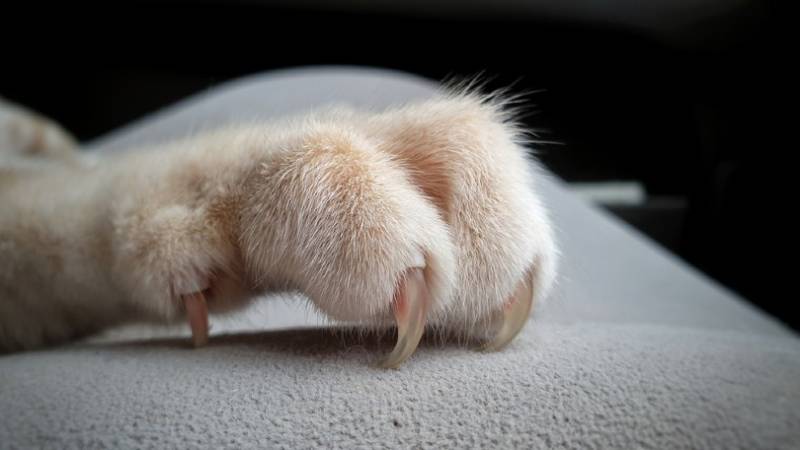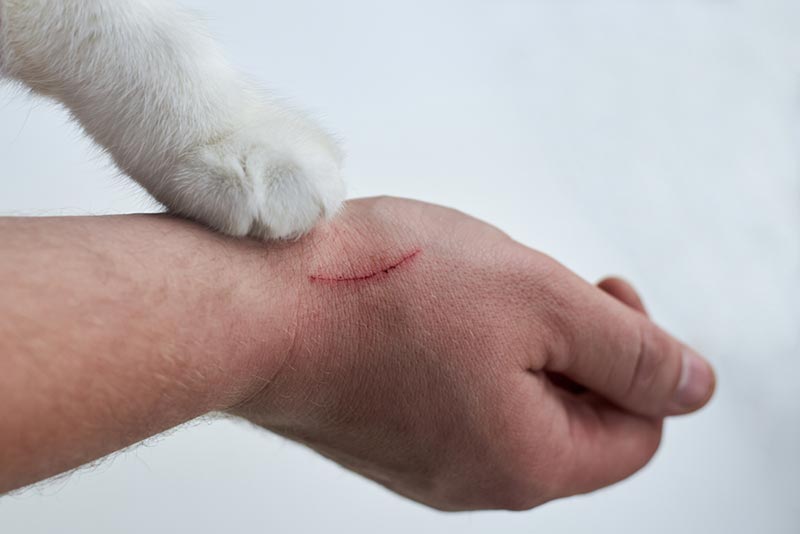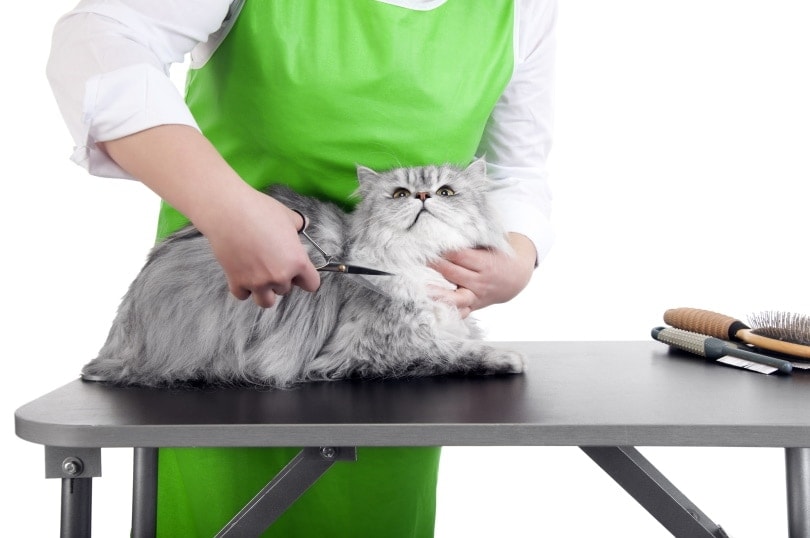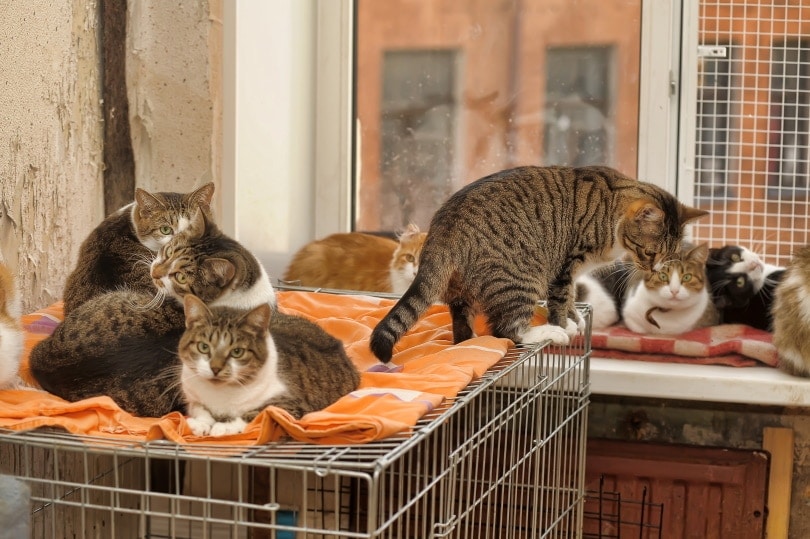How Do Cat Claws Retract? Vet-Reviewed Cat Anatomy
By Lorre Luther
Updated on

Cats have curved claws that they use for protection, hunting, and climbing trees to reach high perches that are just right for relaxing and hanging out. Cats’ claws are retractable, so they can tuck them away when running, walking, or trying to be quiet. They can retract their claws largely because of how their toe bones are shaped and the associated connective tissue.
The Anatomy of Cats’ Paws
Most cats have 18 toes, five on each of their front and four on each of their back paws, but some cats are born with more. Cats have three bones in each toe. They have proximal, middle, and distal phalanges, which are similar to a humans’ finger bones.
The distal phalanx holds the cuticle from which the claw protrudes, and when a cat’s claws are retracted, the bone sits almost vertical. When claws are extended, the distal phalanx will be oriented more horizontally.
Hold on while things get a bit technical. The digital flexor tendon attaches to the underside of the bones of the medial and distal phalanges, while the superficial flexor tendon attaches to the tops. There is a dorsal elastic ligament that attaches the medial phalanx to the distal phalanx as well.
All of these structures play a role in retracting and extending a cat’s claws.

How do Cats Retract and Extend Their Claws?
When a cat wants to extend their claws, they contract the flexor and extensor muscles in their legs, which in turn moves those tendons, drawing the distal phalanx horizontally, exposing the claw.
When they want to retract the claws, instead of using muscles, they rely on the dorsal elastic ligaments to pull and hold the distal phalanx vertical against the medial phalanx, pulling the claw back in. This allows them to use their leg muscles to walk, run or jump without exposing their claws.
Why Do Cats Scratch?
Scratching is a behavior that’s shared by most cats; even African lions enjoy digging their claws into trees! Cats unleash their claws for various reasons. Scratching may be their way of claiming their territory by spreading their pheromones, communicating with other cats, removing dead layers from their claws, or out of boredom. Cats may even extend their claws when they’re comfortable and happy and knead their blanket or your arm.

Are There Ways to Convince Cats Not to Destroy Furniture?
Keep in mind that scratching is an essential part of being a cat, so the goal isn’t to get cats to stop using their claws but to create circumstances where the sofa is less enticing to scratch on. This may mean covering the areas you don’t want scratched in foil or another noisy material that they don’t want to scratch.
At the same time, you’ll want to give them a better alternative for scratching, such as a scratching post. You can place scratching posts in several locations around the house, including close to any places that tend to be of particular interest. A spritz of catnip can double your cat’s fun and encourage them to give unfamiliar scratchers a whirl. Show your cat how to use the scratching post and then reward them with treats or praise when they do.
Frequently Asked Questions
Do Cats Need to Have Their Claws Regularly Trimmed?
Yes! Most cats need to have their claws trimmed every few weeks to prevent problems like broken and ingrown claws. Broken claws can be incredibly painful, and ingrown ones can lead to infections that are hard on cats’ paws and require treatment.
Is There Anything That Can Make Nail Trimming Easier?
Cats accustomed to having their paws handled as kittens are more inclined to tolerate nail trims as adults.
Cats who don’t particularly enjoy having their nails trimmed often respond well when things are taken slowly, and treats and positive reinforcement are given.
Veterinarians and groomers can also do the honors for pet parents who simply don’t feel comfortable with the process.
Do Scratching Posts Help Cats Keep Their Nails Short?
Yes, but even cats who generally adore a good scratching-post session can still benefit from regular nail trims. Clipping indoor cats’ nails is the best way to keep them from becoming weapons, but cats still benefit from having many scratchers around, so they have plenty of appropriate places to give their claws a good workout.
There are horizontal and vertical options, and the products are available with rope, carpet, and cardboard surfaces.
Conclusion
A cat’s paw is a complicated and fascinating anatomical structure that allows them to move their claws in or out whenever they want. Having this ability allows them to walk without their claws clicking the surface, but to be able to unsheath them when necessary.
You can help keep your cat’s claws healthy by providing them with many suitable scratching surfaces and regular trimming to prevent broken or ingrown nails.
Featured Image Credit: RJ22, Shutterstock













